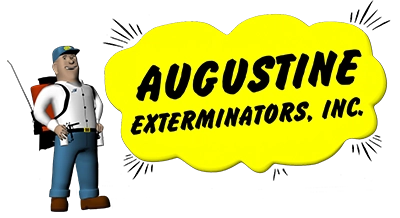How To Choose a Pest Control Company
There are several things that you can take into consideration when choosing the best pest control professionalfor you. Factors you may consider include qualifications and licensing, treatment methods, years of experience, customer reviews, and cost.
Below, we discuss each of these factors in more detail.
Does the company have a valid license and permits to perform pest control?
Per the United States Environmental Protection Agency (EPA), all pesticide applicators and those that supervise them need to be certified at the state level. The EPA does set minimum standards of competency, but all Kansas pesticide applicators must be licensed through the proper state regulatory agencies.
Is the company a member of any professional organizations?
An optional certification that could be worth looking for is the GreenPro Service Certification. In order to get this certification, a pest control company must both show that its practices are more eco-friendly and uphold certain training standards for its technicians. Companies can earn other certifications from QualityPro or similar trade organizations to further support their work.
Pest control companies can also belong to certain professional organizations. Pest control companies can obtain membership in state-level organizations as well as national organizations like the National Pest Management Association (NPMA). While not mandatory, membership in these organizations helps prove a company's reputability and gives it access to education, resources, and a network of other professionals to compare best practices with.
Professional Experience and Specialties
The number of years that a pest control company has been in business can give you some insight into its experience dealing with pests in your area. Customer reviews or the company's own website can also inform you whether it has the experience needed to deal with your particular pests. If you cannot find the answers to your questions online, speaking with a representative is a great way to learn about the company's areas of expertise.
Reviews and Recommendations
Resources that can help you verify a company's reputation include the Better Business Bureau (BBB), social media, and local review sites. You can also confirm the status of a company's license through the Kansas licensing board.
Cost of Services and Guarantees
Cost is important when hiring a pest control company. Cost can be influenced by your location, the size of your house, the type of pest being treated, and other factors.
Often, companies will offer free on-site estimates before starting work, to help you determine whether it fits into your budget. You can also ask whether a company offers a satisfaction guarantees, meaning that if your pest problem is not solved by the initial treatment, it will continue returning until it is.
Safety and Treatment Methods
Keeping yourself, your family and your pets safe is an important concern when picking a pest control provider. You might also prefer a provider that employes eco-friendly practices.
Safety
Your pest control expert should be able to discuss the safety of any and all pesticides that will be used in your home. They should be able to clarify whether the pesticides are low toxicity or non-toxic, and if not what safety precautions will be in place to protect you, your family, and your pets. Any pesticides that pose greater than a minimum risk are required to be registered with the EPA.
Treatment Methods
Pest professionals looking to reduce their use of chemical pesticides often follow practices such as Integrated Pest Management (IPM). Using IPM involves a series of steps:
- Identify problem pests and determine whether immediate action is needed.
- Determine the best and safest course of action.
- Manage the pest problem using a combination of mechanical, cultural, biological, and physical controls.
- Use chemical controls only when absolutely necessary, and always with other techniques for effective long-term pest management.
- Assess the outcome and continue with additional pest control as needed.
















